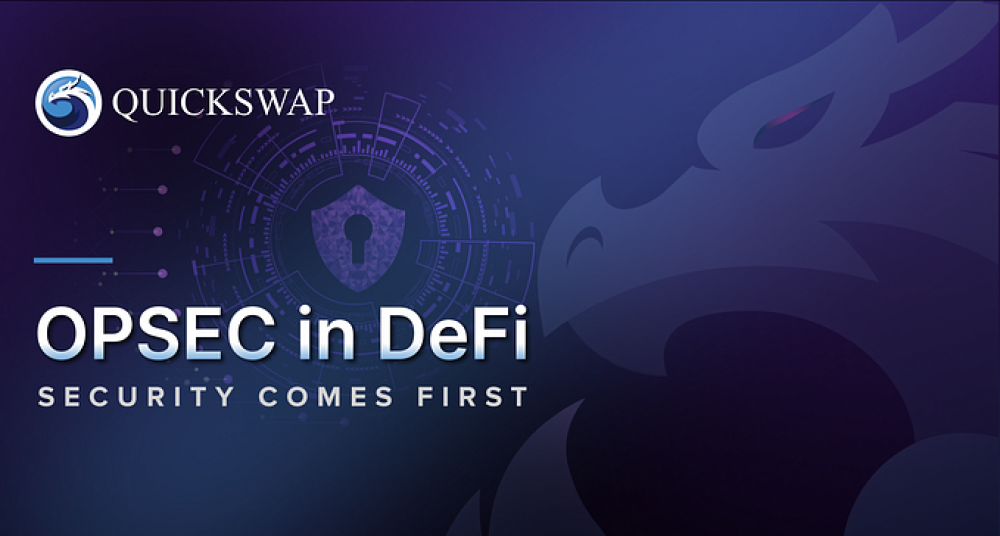Hey there Dragonites — just like you, we at QuickSwap are more excited than ever about the future of DeFi — that’s kind of why we’ve been working day and night on our forthcoming decentralised perpetuals platform, QuickPerps. But today, we want to take a step back to talk about safety and security in DeFi, so you can explore the future of finance without putting your capital in harm’s way. Freedom and responsibility are different sides of the same coin, and a few preliminary measures and simple habits can go a long way in preventing catastrophes down the road. And don’t worry: the necessary preparations don’t take a lot of time or money to put into practice, and aren’t labor-intensive.
Without further ado, the big three OPSEC (operational security) practices to keep bad actors at bay when you’re on your DeFi grind.

1. Your Hardware Wallet is Your Best Friend
There are no 2 ways about it: you’re not getting in DeFi without a web3 wallet of some kind. While an ever-expanding line of DeFi-ready wallets already exists in the digital asset space, most wallets can be classified in one of two categories: software (hot) wallets and hardware (cold) wallets. While software wallets offer slightly better ease-of-use, they do not and cannot provide the level of security built into a hardware wallet. Plain and simple, hardware wallets are the gold standard for security in personal asset management.
Fortunately, leading hardware wallet producers are making their wallets more user-friendly to tackle convenience issues for less patient DeFi users. Recently, a number of native hot wallet users have been systemically scammed and drained of their assets — tokens and NFTs alike. Choose a hardware wallet today, and avoid the hassle later!

2. Store your Seeds Locally
Once you’ve selected the right hardware wallet, you’ll need to store your wallet’s private keys safely and securely in order to ensure you don’t lose access to your funds. However, no matter how unlikely it may seem, any private keys you store online — be they in cloud storage via Google Drive, on your desktop’s notepad, or in a messaging application — can be compromised by savvy attackers. To rule out any risks and avoid headaches and lost sleep, never store your keys on an internet-connected device. Writing down seed phrases on a piece of paper is always best practice!

3. Watch What you Sign
With a robust hardware wallet in your possession and a handy piece of paper stored away, you’re almost ready to dive into DeFi with peace of mind. But wait one second! In a truly free financial landscape, the mandate for personal responsibility never ceases. So keep your ears open and your eyes peeled, and remain vigilant — attackers are always scheming to catch you in a vulnerable moment.
For most security-conscious users, that vulnerable moment arrives when it is time to sign a transaction in their wallets to advance a process. Always, always, and always be careful when you are prompted to sign a transaction on your wallet. You may be granting someone you do not know permission to access your assets. As a general rule, never click through transaction confirmations mindlessly, and always make sure you know what you’re signing!
Whether you’re using a hardware wallet or a software wallet, storing your keys on a fortune cookie wrapper or pasting them to your forehead, you will not be able to revoke signing away your capital. Moving slowly through all transaction-signing processes is a best practice that will keep you safe and ensure that the rest of your DeFi OPSEC practices don’t go to waste.
As sweet as the freedom provided by decentralised financial services can be, safety must come first. It only takes a few simple practices to protect your capital today and tomorrow, so you can sleep easy and navigate DeFi with the wind at your back.
Stay safe out there, Dragons!






